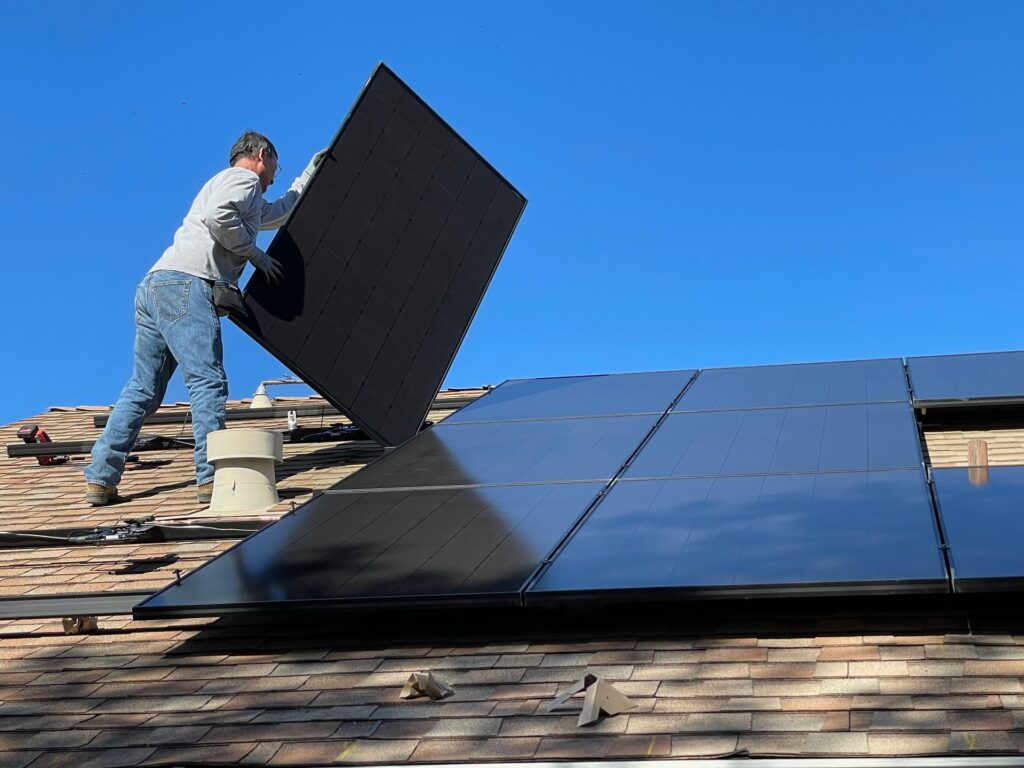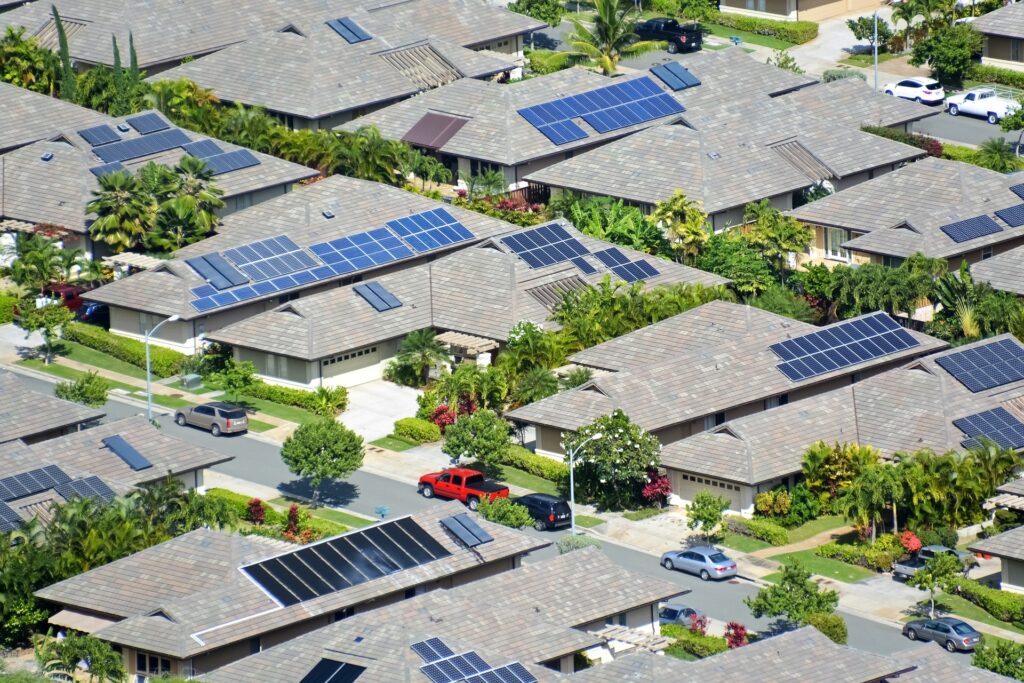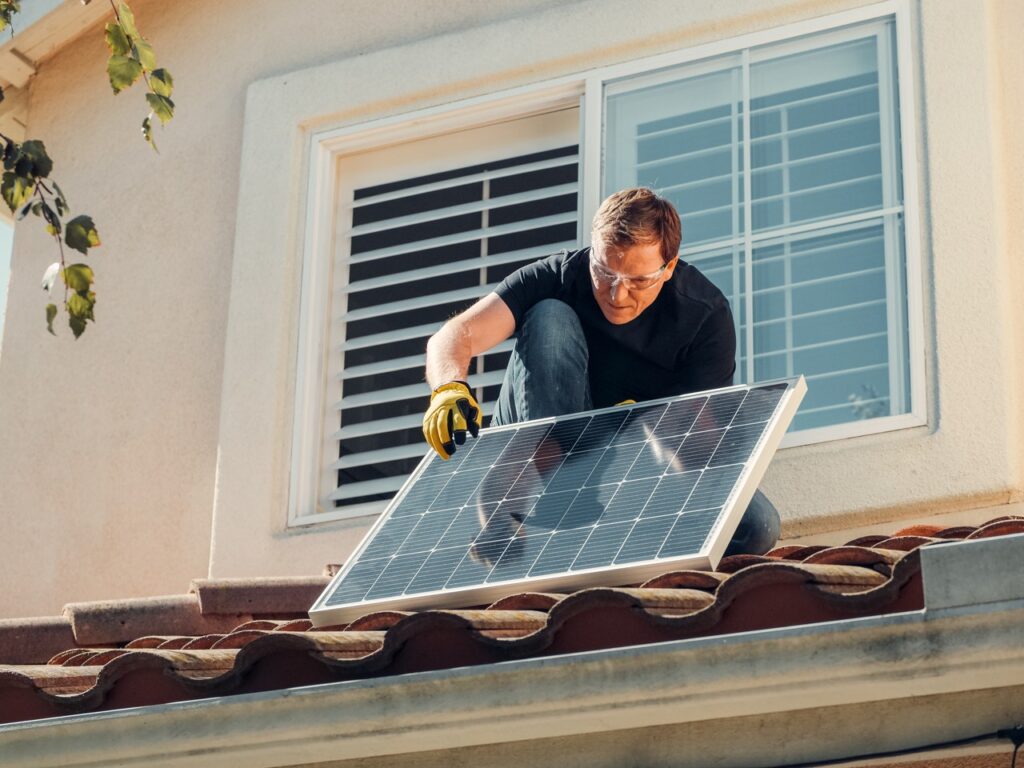
While most homeowners power their homes with electricity, it’s possible to do so with solar power, which has become increasingly popular in California. Solar power is the power that’s obtained by converting sun rays into energy. This can be accomplished by placing photovoltaic panels on your roof. Once the rays from the sun are converted into energy, the energy can be placed into thermal storage or batteries, after which you can power your home with the stored energy.
Outfitting your home with solar panels is a great way to avoid the high costs that come with standard electricity. Solar power is also environmentally friendly, which allows you to do your part to protect the environment. California is considered to be a great state for solar power because of its weather. In the entire U.S., the average number of sunny days per year is around 205. This average rises substantially to 284 days per year in California, which means that you don’t need to worry about not being able to collect enough energy to power your home.
Even though solar power comes with a sizable upfront investment because of the photovoltaic panels that need to be installed on your roof, you should save an ample sum of money in the long run. Once solar panels have been installed on your roof, most or all of the appliances in your home can be powered by solar energy, which means that you’ll no longer need to pay a utility provider for electricity.
If you’re wondering about the upfront costs for solar panels, you can expect to pay around $10,000-$25,000 in total costs. These expenses include the costs associated with purchasing the solar panels as well as the installation costs. It’s important to understand that you can get some of this money back via solar power incentives, of which there are numerous to select from in California. This article offers a closer look at some of the top incentives available to homeowners who go solar in California.
1. Self-Generation Incentive Program (SGIP)
Among the best incentives available to homeowners is the Self-Generation Incentive Program, which provides a rebate that extends from $200-$1,000 for every kilowatt-hour of storage. If you have a 10 kWh solar battery system installed, you could obtain incentives between $2,000-$10,000. This particular incentive is available as long as you obtain a battery storage system that’s serviced by companies like Southern California Gas and PG&E. Before thinking about applying for this incentive, it’s important to understand that there are three separate tiers available to you, which include residential storage, residential equity storage, and residential equity resiliency storage.
Residential storage refers to storage systems that are less than 10 kW in size and are installed directly on a residential property. If this situation applies to you, it’s possible that you would qualify for a rebate of $200 per kWh. The majority of homeowners who install solar panels on their roofs qualify for this incentive tier.
As for residential equity storage, this tier is available to homeowners who live in disadvantaged or low-income areas. The incentive is larger than the first tier to better encourage solar panel installations in low-income places. If a homeowner qualifies for the residential equity storage tier, they will receive a rebate that amounts to $850 for every kWh.
The third and final tier is the residential equity resiliency storage tier. In the event that a low-income home is situated in a fire district with a rating of tier 3 or tier 4, the incentive for installing battery storage can be even higher. This incentive tier also applies to homeowners in this area who have experienced at least two planned safety power shutoffs. If you qualify for the third incentive tier, you could receive a rebate of around $1,000 for every kWh of storage, which would likely cover the entirety of the solar battery system. You can find out more information about the Self-Generation Incentive Program at this link.

2. Local Utility Company Rebates
Local utility companies may also offer rebates that you could take advantage of. These rebates could be anywhere from $100-$2,000 for every kW of home solar that you install. You can obtain this incentive for as much as four kW of home solar. Keep in mind, however, that the incentive can vary based on applicant income, system size, and location. You can inquire about the rebate amount you would qualify for by contacting your local utility provider.
3. Federal Solar Tax Credit
The Federal Solar Tax Credit is available to homeowners who purchase their solar panel system outright as opposed to paying for the system in installments. This credit is designed to help homeowners reduce their overall tax burden for the year in which they install solar panels on their homes. If you have your solar panel system installed in 2021 or 2022, you could qualify for a tax credit of 26% of the system’s total costs.
In the event that your solar panels are installed in 2023, the tax credit would drop to 22% of the total system costs. It’s important to understand that the U.S. Congress must renew this incentive program for it to continue. At the moment, the program would expire in 2024 unless Congress renews it. You can find out more about this specific tax credit at this link.
4. DAC-SASH
The DAC-SASH incentive program is designed to provide solar incentives for homeowners who reside in single-family homes that are situated in disadvantaged communities. If you believe that you would be unable to afford solar panels and are currently residing in a disadvantaged community, you could qualify for this incentive. You will need to live in one of the top 25% of most disadvantaged communities in California in order to qualify. You must also be a customer of Pacific Gas and Electric, California Edison, or SDG&E. You can find out more about this particular incentive program and if it applies to your situation at this link.

5. Solar Energy System Property Tax Exclusion
If you add a solar home installation to your property or build a new home that’s comprised of a solar panel system, you could qualify for the solar energy system property tax exclusion. In the event that you qualify for this particular exclusion, your property taxes wouldn’t increase until 2024, which allows you to save an ample sum of money over the next few years.
Keep in mind that your home will also increase in value by an average of 3% once these panels have been installed. Many buyers who are looking to move to California are searching for homes that contain solar panel systems, which is why it’s highly recommended that you outfit your home with one of these systems.
6. Single-Family Affordable Family Housing (SASH)
The Single-Family Affordable Family Housing program is very similar to DAC-SASH and is designed to provide assistance to homeowners who don’t have enough income to purchase solar panels on their own. Your household income must be 80% lower than the median income in your area if you want to qualify. This particular incentive amounts to $3 per watt of installed solar. If you want to qualify for this incentive, it’s essential that you own your home and are currently living in it. You can read more about the SASH incentive and determine if you qualify by navigating to this link.
7. Federal ITC Solar Tax Credit
The Federal ITC Solar Tax Credit is similar to the one mentioned previously and is designed to help you cover some of the upfront costs associated with having solar panels installed on the roof of your home. The ITC tax credit is unique in that it allows commercial and utility investors to also qualify for the tax credit. As mentioned previously, residential homeowners can gain an incentive that amounts to 26% of total system costs on their tax returns.
Even though California offers many solar incentives that you would likely qualify for, you should still look into the ITC tax credit to determine if it’s right for you and your household. You can learn more about ITC credit by going to this link.

Overall Thoughts on the CA Solar Incentive
The solar incentives that are offered by California are a great way to entice homeowners into converting to solar. Along with the monetary benefits that come with switching from standard electricity to solar energy, solar power is also highly beneficial for the environment. Solar energy reduces air pollution, water usage, and dependence on non-renewable energy sources. Unlike standard forms of power, energy from the sun won’t run out.
If you want to understand how much solar energy is used by the solar panels on your roof, each panel generates around 1.5-kilowatt hours of energy every day, which amounts to around 500-550 kilowatt-hours of energy every year. When you decide to install solar panels on your roof, the aforementioned incentives should help you substantially reduce your upfront costs, which will lessen the amount of time it takes to make your money back from the savings on your monthly energy bill.